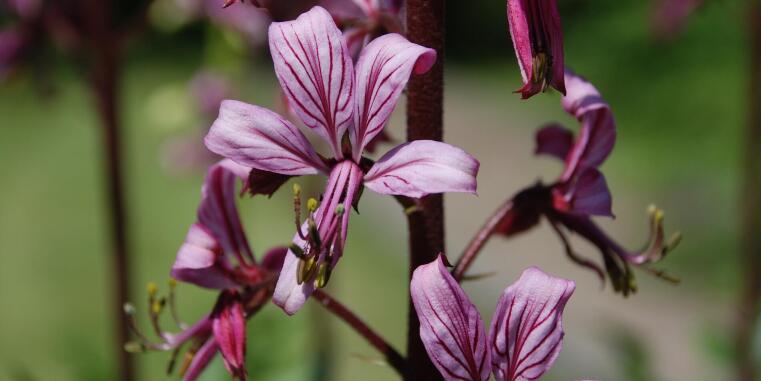

botanical background
order: Sapindales
family: Rutaceae
genus: Dictamnus
species: burning bush (Dictamnus albus)
attributes: up to one meter height, rose-white blossoms, contains essential oils, phototoxic, provoces rushes when touched
origin: central and southern Europe into Asia
habitat: also imported into the USA
note: The plant (dictamnus albus) produces essential oils which deflagrate in the heat, which suggests a connection between a deflagration of essential oils and the burning bush. The diptam is shown exemplarically because it doesn‘t have thorns.
in the Bible
And Moses kept the flock of his father-in-law Jethro, the priest of Midian. And he led the flock to the back side of the desert. And he came to the mountain of God, to Horeb. And the Angel of Jehovah appeared to him in a flame of fire, out of the midst of a thorn bush. And he looked. And behold! The thorn bush burned with fire! And the thorn bush was not burned up.
Genesis 3, 1-6
In the vocation of Moses (Ex 3,1-5) the Hebrew word סנה(snæh) describes the thorbush. Which bush is actually meant, has been discussed heatedly. Especially popular is the identification with the blackberry bush (Rubus discolor), which features in the Greek translation of the Old Testament (Septuaginta) and the Latin Vulgata. Beyond Exodus the thornbush is mentioned only in the fifth book of Moses (Dtn 33, 2.16), translated once as Sinai and once as thornbush.
mentions: several
other text passages (selected):
Genesis 3,2-4
Deutoronomy 33,2 (Sinai)
Deutoronomy 33,16 (Dornbusch)
Sources
Blanco Wißmann, Felipe: Dornbusch, in: Das wissenschaftliche Bibellexikon im Internet (Jan. 2008), URL: https://www.bibelwissenschaft.de/wibilex/das-bibellexikon/lexikon/sachwort/anzeigen/details/dornbusch/ch/5214741e2db92e983e9c789b746003e9/ (abgerufen 01.05.2023).
Modern King James Version.









